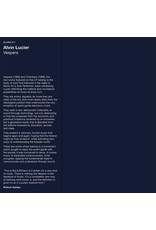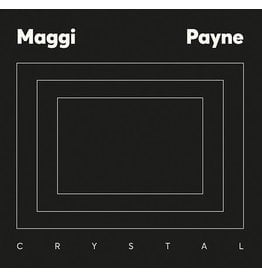Lucier, Alvin: Vespers LP
| Availability: | Out of stock |
"This is the fulfillment of a dream for a new kind of music. There is nothing like Vespers in the literature of music. It is a completely new way of defining what music is, and the definition is given to us in a purely realized form." --Robert Ashley. Alvin Lucier is among the most important, influential, and radical of the second generation of the post-war avant-garde composers. First released as Lucier's contribution to the Sonic Arts Union's lone LP, Electronic Sound (1972), Vespers is a work generated by two equal actors: the performers and the space that they occupy. Conceived following a chance encounter with hand-held echolocation technology "the Sondol", a pulse oscillator that emits short, sharp pulses at variable repetition speeds, producing echoes from the reflecting walls of a space to register relative location and orientation. Written as a poetic "prose score", for the realization of Vespers, each performer is equipped with a "Sondol" and asked to move blindfolded within a defined space, moving from one point to the next using only echolocation, taking what Lucier describes as "sound photographs" that reveal discrete details of the given area. Despite the radical leap it presented within the history of the sonic arts, Vespers was not the first of Lucier's works that began to specifically address the relation between sound, perception, and space. Chambers, composed the year before in 1968 and embedded with the wry humor which lingers below much of the composer's output, explored the theme on a brilliantly miniature scale. As a total work, Chambers contends with the relationship between the knowing and understanding of what we hear, our perception of the source of a sound, and its relation to space. When viewed in the immediate context of Vespers, it presents as an unexpected inversion of what was to come. While it plays on the relation of sight and the sonic actor, what is seen and unseen takes on a dynamically different role. For the realization of Chambers, battery-operated radios, tape recorders, and various kinds of electric toys are hidden in paper bags, shoes, kettles, a suitcase, and other small resonant spaces, which not only limit the perception of these object to their sounds alone, but take on the role of acoustic actors on the sounds within, each space becoming as individual and distinct as the object it contains. Newly designed obi-strip/insert with an introduction by Robert Ashley, liner notes by Bradford Bailey and Gaia Martino. 160 gram, dark blue vinyl; edition of 300.





